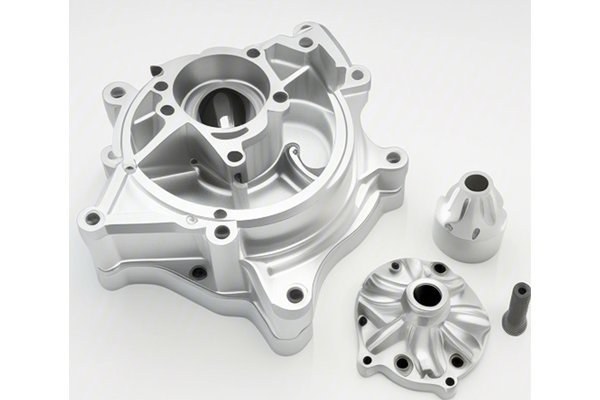Opening:
Did you know that the global CNC machining market is expected to reach over $100 billion by 2027, growing at a compound annual growth rate (CAGR) of more than 6%? This explosive growth is not merely due to the increasing demand for precision engineering and automation; it reflects a significant evolution in CNC machining technology itself. As we enter 2024, several trends are emerging that could transform the landscape of CNC machining, revolutionize manufacturing processes, and define the future of this vital industry. In this blog, we will explore the ten trends driving CNC machining into a new era of efficiency, precision, and innovation.
Content:
The integration of automation and robotics is no longer a luxury; it is a necessity for any CNC machining operation aiming to stay competitive. With advancements in AI and machine learning, CNC machines can now operate with little to no human intervention. Automated CNC cells can work around the clock, leading to significant productivity increases and reducing lead times. By 2024, expect to see more small and medium-sized enterprises adopting these technologies, further democratizing access to sophisticated machining capabilities.
The advent of IoT in CNC machining allows machines to be interconnected, providing real-time monitoring and predictive maintenance. This connectivity not only improves machine efficiency but also enhances operational lifespans by predicting when parts need replacement before failures occur. In 2024, the adoption of IoT devices for CNC monitoring will increase, as manufacturers seek to harness data analytics to optimize their operations more effectively.
As the demand for high-performance products increases, so does the need for advanced materials in CNC machining. Trends indicate a growing use of composite materials, lightweight alloys, and superalloys that enhance performance in extreme conditions. The challenge lies in developing CNC machines that can efficiently process these materials, which is expected to make a vast leap in 2024, allowing industries like aerospace and automotive to innovate continuously.
The shift towards customization in manufacturing means that CNC machining cannot afford to lag behind. In 2024, we will see an increasing number of CNC machines integrated with 3D printing capabilities, allowing for a hybrid approach that combines subtractive and additive processes. This trend will enable manufacturers to create highly customized components without extensive retooling.
With growing environmental concerns, sustainability is emerging as a crucial focus in CNC machining. In 2024, expect to see more companies investing in energy-efficient machines and practices, reducing waste in machining processes, and utilizing recyclable materials. The push for green manufacturing aligns with global standards and consumer demand for eco-friendly products, making sustainability a trend that cannot be ignored.

The software that runs CNC machines plays a critical role in operational efficiency and precision. In 2024, expect significant advancements in CAD/CAM software that streamline design-to-manufacturing processes. Enhanced user interfaces, improved simulation capabilities, and AI-driven design features will aid in reducing errors and facilitating quicker prototyping.
As technology in CNC machining advances, so too does the need for skilled workers. The future holds a strong emphasis on workforce training programs that focus not only on traditional CNC machining skills but also on new technologies such as automation and data analytics. Companies will invest in ongoing education and hands-on training to ensure their workforce is prepared for the rapid changes ahead.
With industries demanding tighter tolerances and higher precision, CNC machining tools are evolving to meet these challenges. In 2024, we can expect the introduction of next-generation machines equipped with features like laser-assisted manufacturing and high-speed machining capabilities to enhance accuracy and surface finish.
With the advancement of VR and AR technologies, training for CNC machining will become more immersive and effective. These technologies allow employees to experience machinery in a virtual environment, enabling them to understand machine capabilities and troubleshoot issues without risking actual equipment damage. In design, AR can provide real-time feedback and visualizations, allowing for more informed decision-making.
The global pandemic highlighted vulnerabilities in traditional manufacturing and supply chains. In 2024, decentralized manufacturing models will gain traction, allowing companies to adapt quickly to regional demands and mitigate risks. This trend will encourage the establishment of localized CNC machining hubs, enabling businesses to respond more flexibly to supply chain disruptions.
:
As we explore the future of CNC machining technology in 2024, it’s clear that the landscape is rapidly evolving. The trends discussed—automation and robotics integration, IoT connectivity, advanced materials, hybrid manufacturing, sustainability, software innovations, workforce training, precision enhancements, VR/AR technologies, and decentralized manufacturing—highlight a transformative shift in how CNC machining operates.
This blog is essential for anyone engaged in or impacted by the manufacturing industry, as these emerging technologies will not only shape operational efficiencies but also redefine competitive advantages. Keeping abreast of these trends ensures that businesses can innovate and grow in a highly competitive environment. As we venture into 2024 and beyond, staying informed and adaptable to these changes will be crucial for success in the CNC machining sector. Let’s embrace these advancements to drive our industry forward!
—






